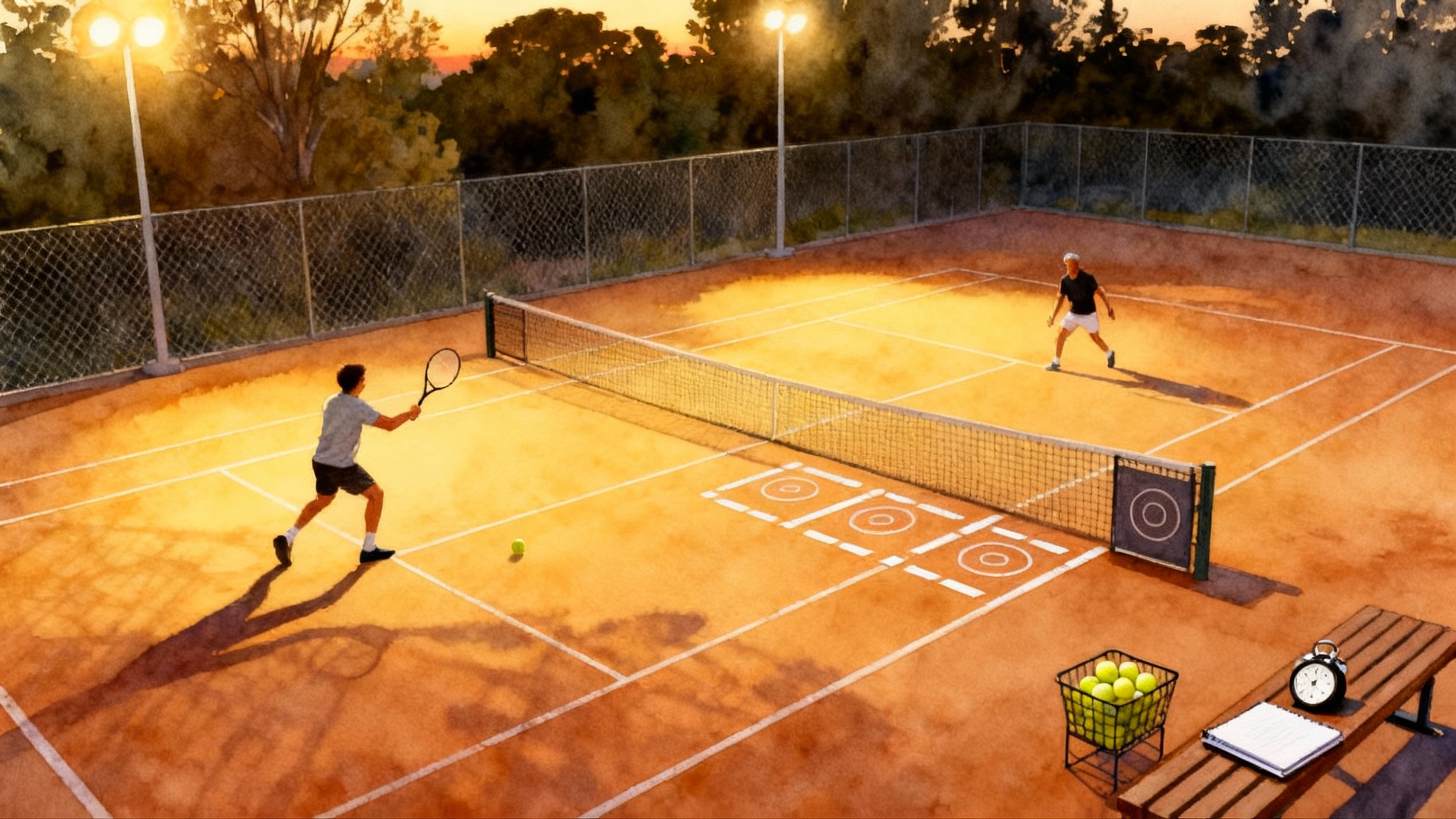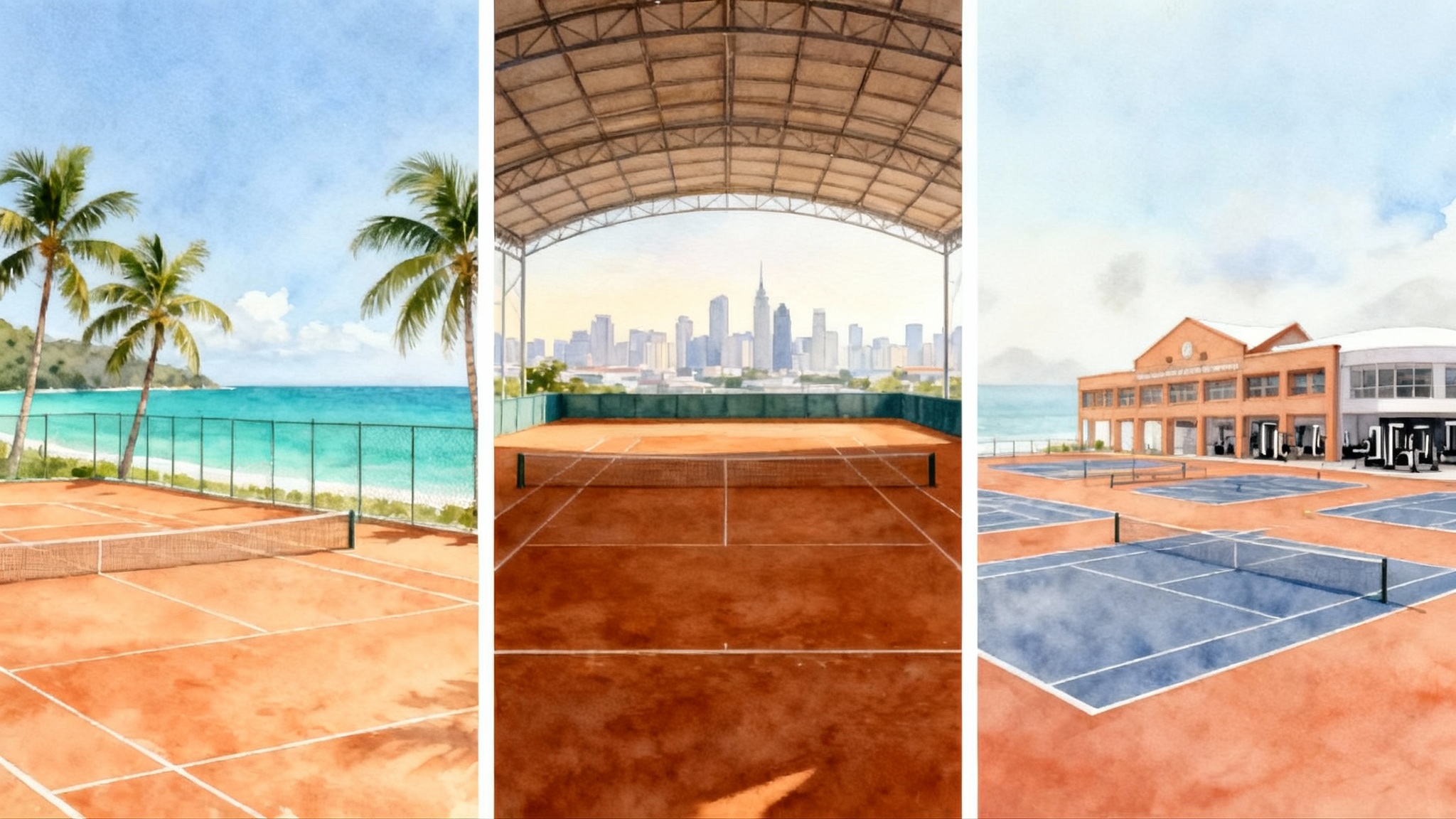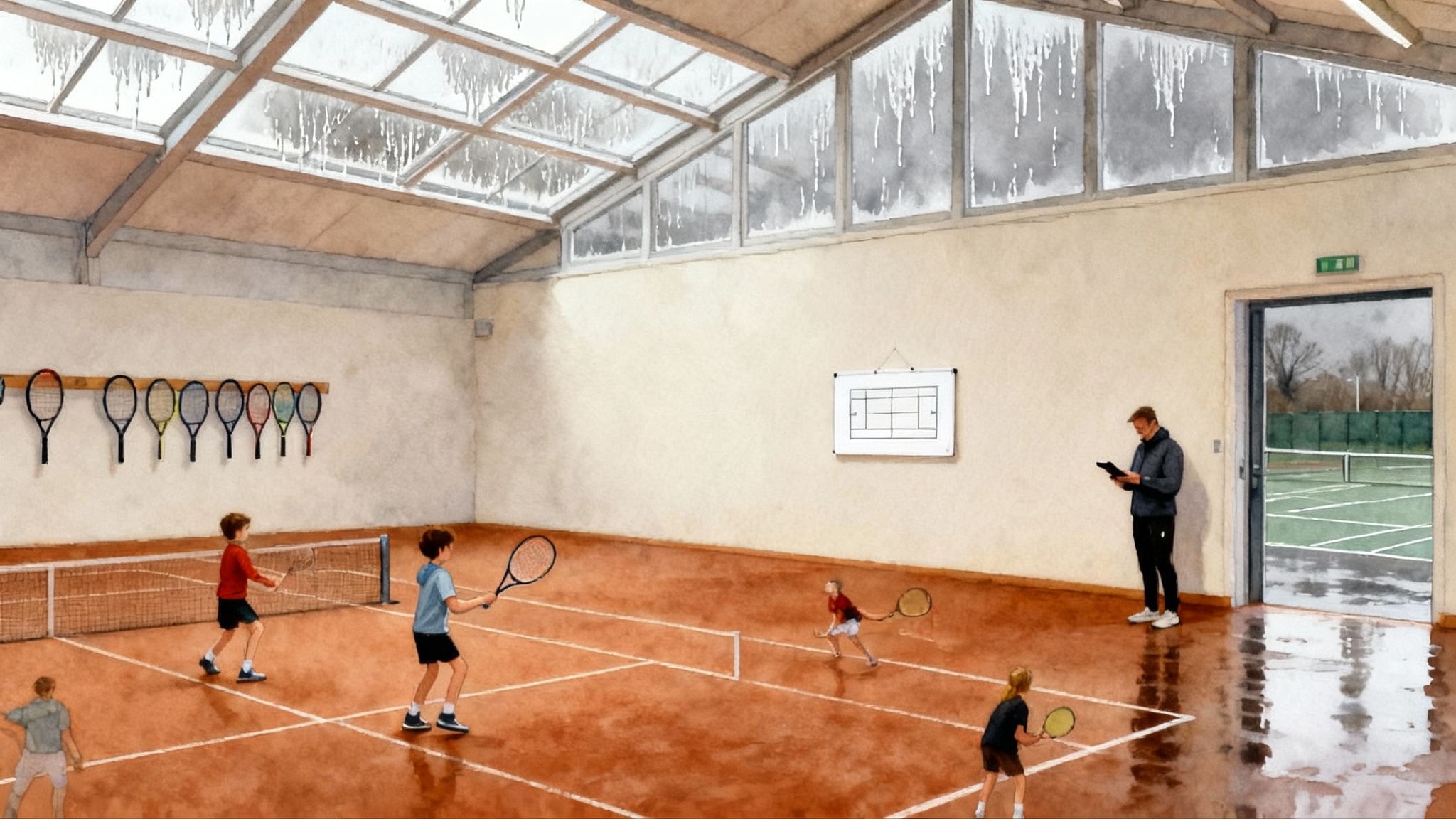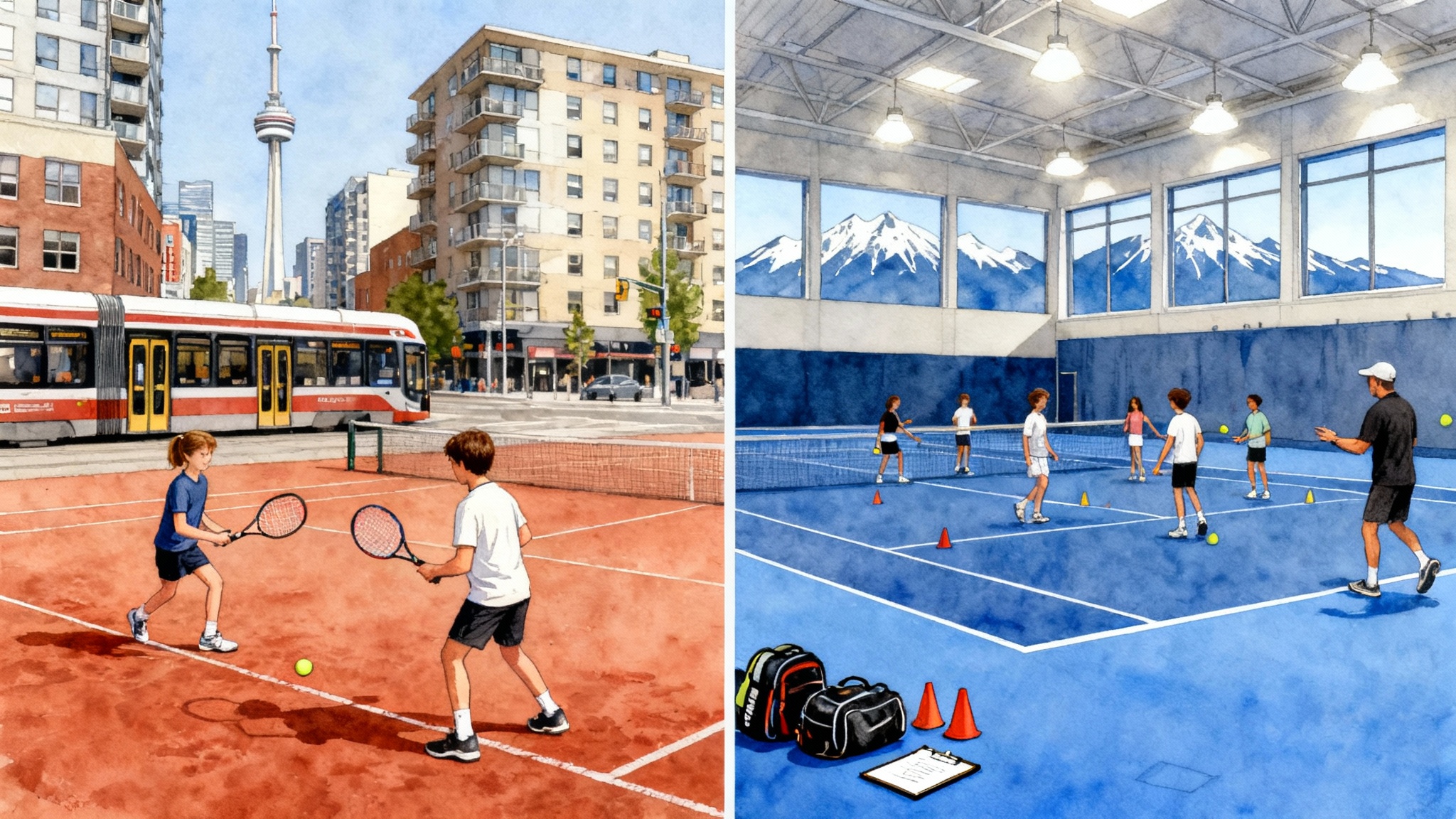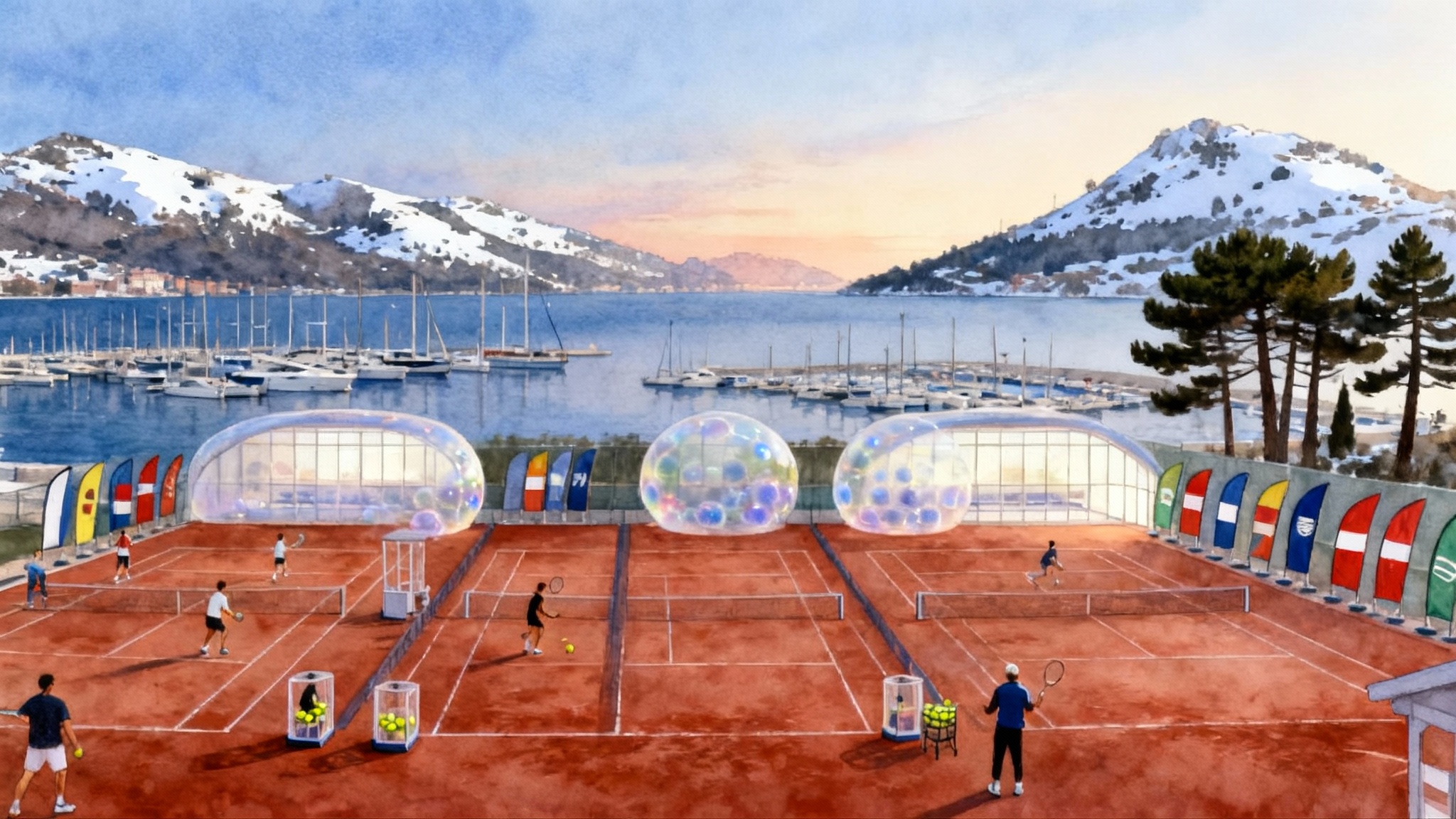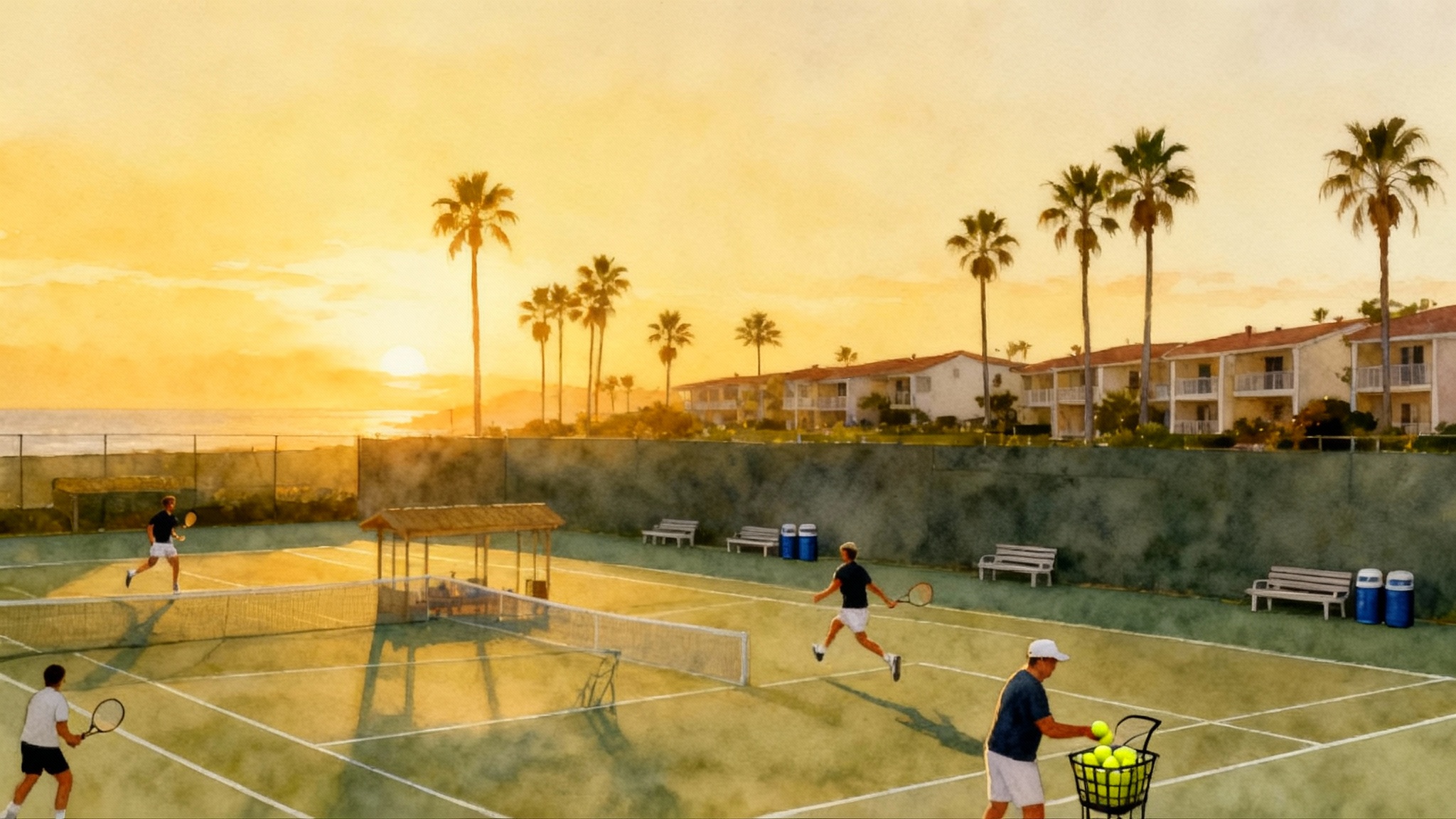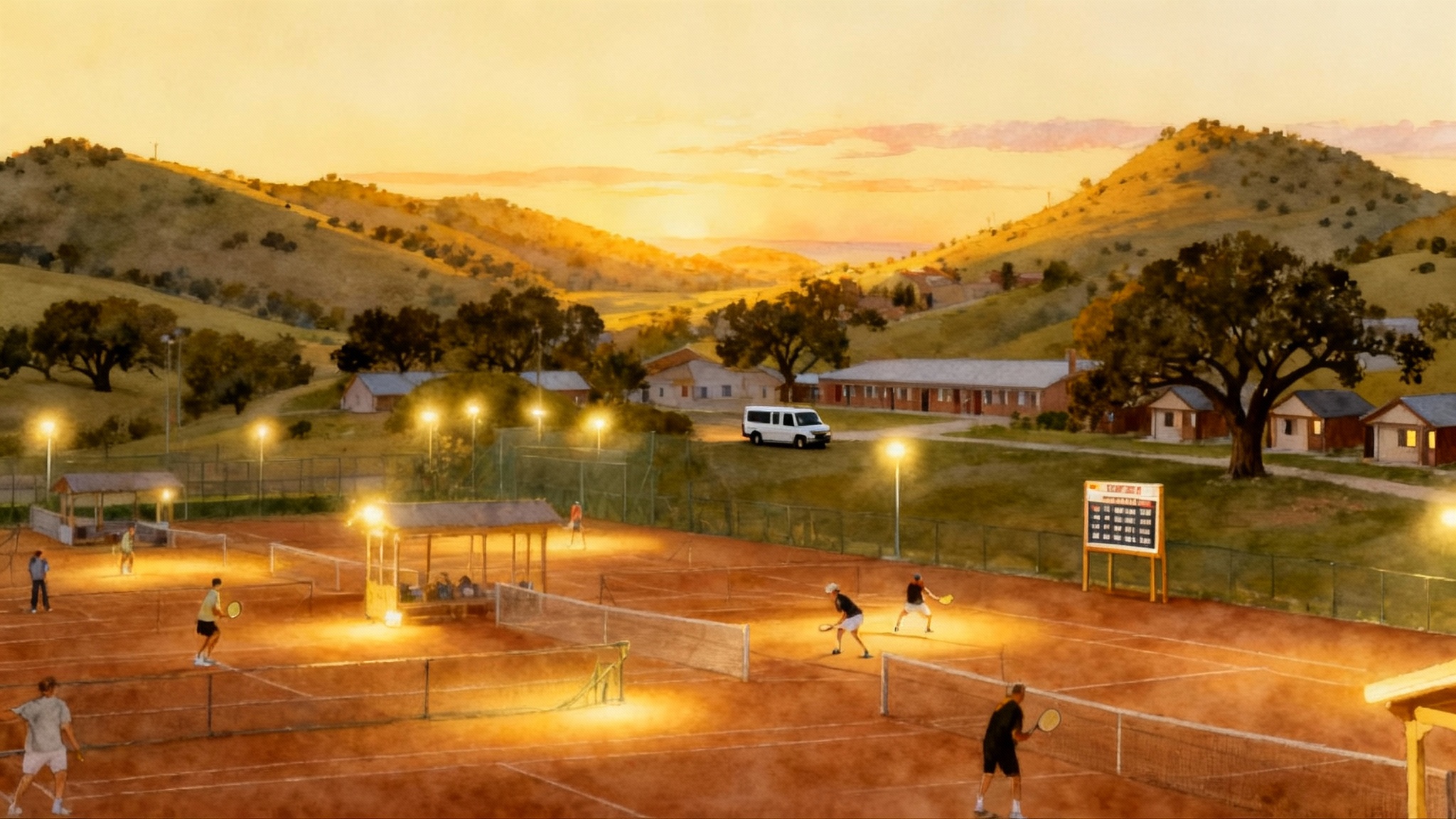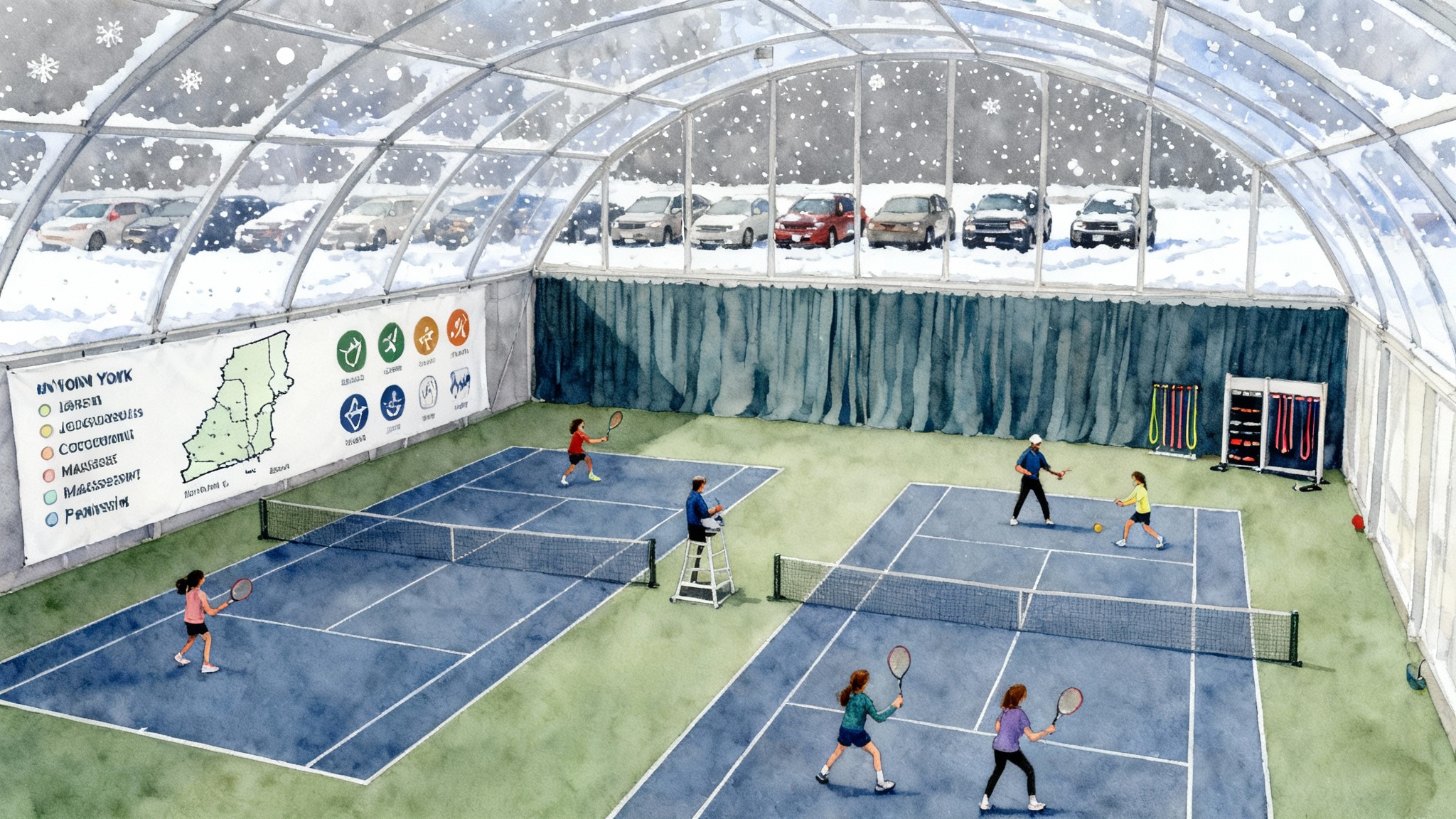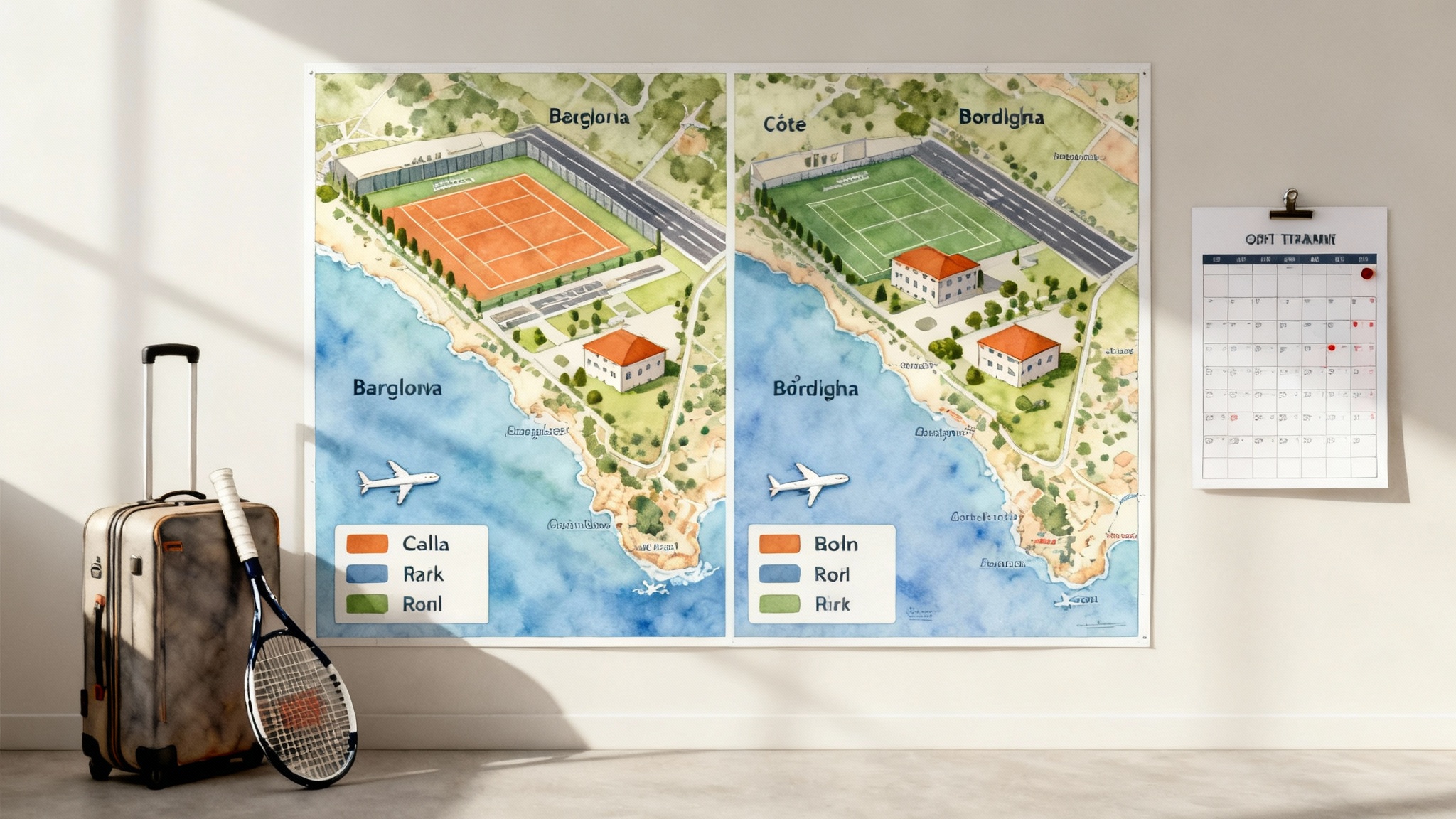Best Portugal Tennis Academies 2025–2026: Lisbon vs Algarve
Planning a training base in Portugal for 2025–2026? Here is a family-first comparison of Cunha e Silva in Oeiras, Lisbon and The Campus in Quinta do Lago, Algarve, with coaching style, courts, costs, schooling, tournaments, and travel laid out clearly.
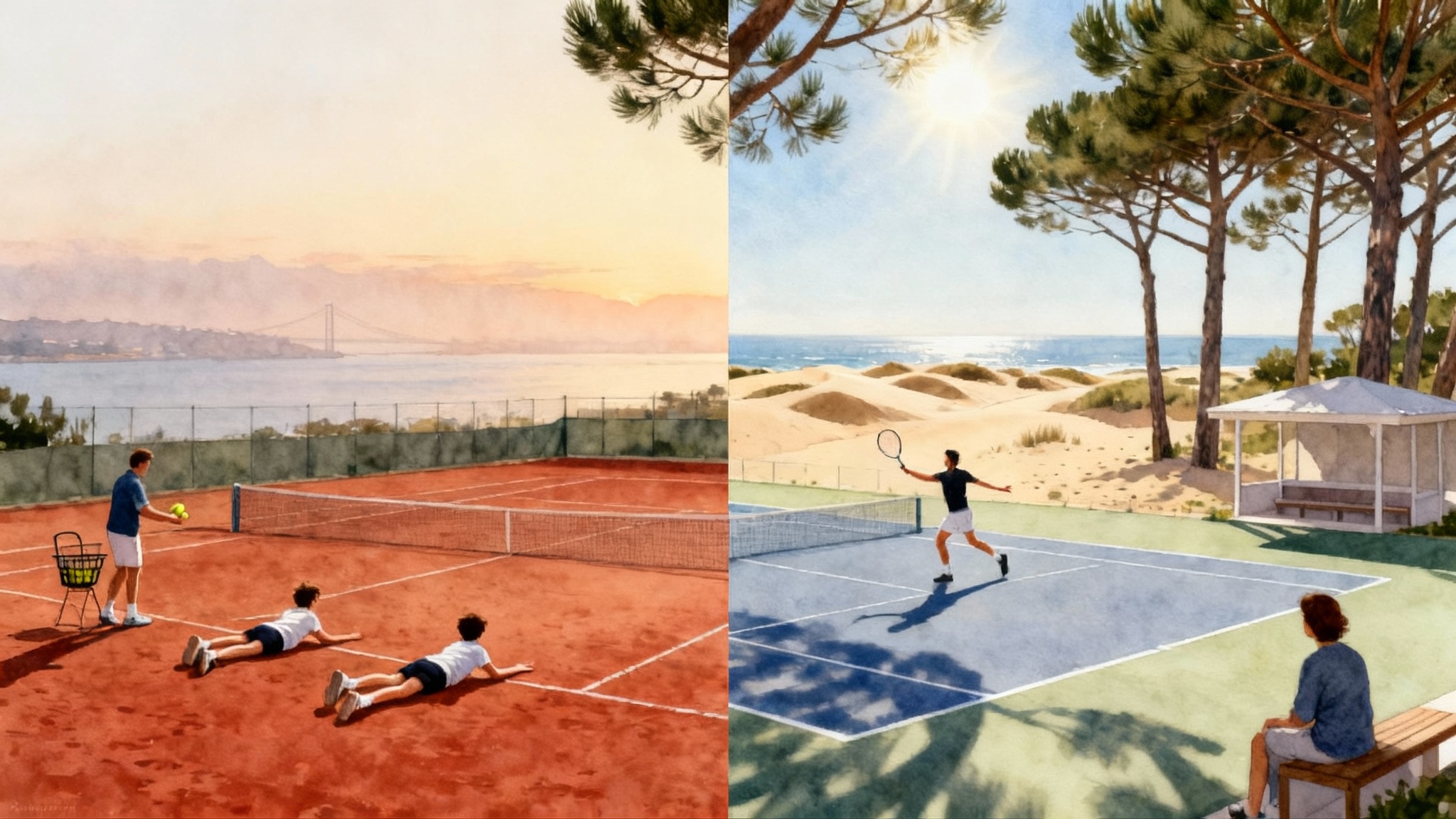
The quick verdict for busy families
If you want a dense competition calendar, mixed surfaces, and easy city logistics, Lisbon’s Oeiras edge is real. If you want predictable weather, resort convenience, and all‑in‑one fitness, the Algarve’s Quinta do Lago makes life simpler. The good news is that both academies deliver serious coaching. The choice comes down to how your family balances training quality against climate, travel time, schooling, and budget.
- Choose Cunha e Silva in Oeiras if you prioritize match play density around Lisbon, a clay‑first culture that builds patterns and patience, and access to indoor courts for rainy weeks. The academy lists six clay courts, three synthetic courts, and two indoor hard courts, which gives juniors variety without compromising a clear technical identity. See the listed facilities on the Cunha e Silva Academy page.
- Choose The Campus in Quinta do Lago if you want sunshine most weeks of the year, modern acrylic and synthetic clay courts inside a resort ecosystem, and a high‑performance gym and recovery setup within a short walk. Its tennis page notes four acrylic tournament courts and two synthetic clay courts, plus publicly listed weekly packages for trials. Details appear on Tennis at The Campus.
Coaching methodology, explained simply
Both academies teach all‑court tennis, but the method emphasis differs in ways that matter for juniors at different stages.
-
Oeiras, Lisbon: The Cunha e Silva staff leans into a Portuguese clay DNA. Think of it as learning to write with a fine fountain pen before you sprint with a marker. Sessions typically begin with footwork and shape, then build toward point construction. Expect heavy use of live‑ball repetitions, pattern building on crosscourt plus inside‑out forehands, and a steady diet of situational games that reward consistency under pressure. For pre‑teen and early teen athletes, this cements grips, balance, and decision habits that translate to any surface. Advanced players still get pace and offense, but from a structure‑first base.
-
Quinta do Lago, Algarve: The Campus platform feels like a performance lab inside a resort. Coaching often pairs technical themes with athletic work in the fitness center, then returns to the court for applied drills. You will see frequent video checkpoints and periodized blocks that mix on‑court intensity with gym‑based strength, mobility, and recovery. For teens who need to add speed and first‑strike patterns, the acrylic courts teach you to take the ball early and finish. The synthetic clay courts preserve point‑building skills without the grind of heavy clay in wet months.
Why this matters: methodology shapes the default match your child plays under stress. If your player tends to overhit, the Oeiras clay rhythm slows them down and builds percentage tennis. If your player lacks first‑step speed or strike commitment, the Algarve’s faster acrylic rewards taking time away.
Court surfaces and facilities
-
Cunha e Silva, Oeiras: Six clay courts keep the daily base European. Three synthetic courts and two indoor hard courts extend training options when it rains or when you want a faster read. The on‑site gym, physio support, and player lounge support longer days without wasting time in traffic. The indoor capacity is practical insurance from November through March.
-
The Campus, Quinta do Lago: Four acrylic tournament courts and two synthetic clay courts suit mixed preparation for hard‑court events while keeping rally discipline. The fitness center, recovery suites, and pool are on campus. That matters for double sessions because you can lift, eat, recover, and return to court without moving the car.
Action takeaway: if your season targets clay circuits in spring, prioritize more clay weeks in Oeiras. If you are aiming at hard‑court peaks, schedule a larger share of Algarve weeks.
Boarding and schooling options
Neither academy is a traditional boarding school in the strict sense. Families usually choose between three models.
- Family‑based rental: Rent an apartment near Oeiras or a villa in Quinta do Lago. This is most common for a semester because it gives control over food and study schedules.
- Hotel or serviced residence: Popular for week‑long trials and short blocks. The Campus is inside a resort community, so walking distances are short and meal options are consistent. Around Oeiras you will find business hotels and coastal apartments within a short drive.
- Homestay fragments: Some families arrange partial homestays through local networks while maintaining a nearby rental. Use this only with vetted contacts and clear house rules.
Schooling: The Lisbon corridor has multiple English‑language schools within a reasonable commute of Oeiras. Families in the Algarve typically use international schools in the Almancil to Lagoa axis or choose accredited online schooling. In both regions, online programs paired with a local tutor three afternoons per week keeps athletes on track during tournament weeks.
Action takeaway: for a semester, pick a housing option you can reach in under 20 minutes at rush hour. Over a 12‑week block that saves 20 to 30 hours of commuting, which converts into recovery and homework time.
Costs, with realistic ranges
Prices move with season, program intensity, and private lesson load. The Campus publicly lists sample weekly packs for adults and club players and typically posts junior packs seasonally. Confirm current junior program fees directly on their tennis page. Oeiras programs are competitive with Lisbon market rates. For planning, use these conservative ranges and adjust once you receive a written quote:
- Week‑long junior trial with one private per day: 600 to 1,000 euros for training, plus 250 to 500 euros for court and assessment fees and strength sessions, plus housing.
- Semester training block, five days per week, two sessions per day with periodic privates: 6,500 to 12,000 euros for academy tuition, plus housing, schooling, and transport.
- Private lessons: 50 to 120 euros per hour depending on coach seniority and season.
Budget guardrail: set aside 20 percent contingency for tournament entries, stringing, physio, and last‑minute private add‑ons. Resort areas price food and accommodation higher in school holidays, while Lisbon has better off‑season apartment value.
Weather seasonality and what it means for training
- Algarve: The southern coast enjoys more dry days and milder winter temperatures. You can count on consistent morning sessions most months. Wind picks up some afternoons, which is useful for teaching spin control and serve adjustments.
- Lisbon coast: Winters are cooler and wetter, especially between late November and February. Mornings can be damp on clay, but indoor courts in Oeiras reduce cancellations. Spring and autumn are ideal for longer point play and aerobic base.
Practical scheduling: If you need a high‑probability January block with minimal weather risk, favor the Algarve. If you want a mixed‑surface, match‑heavy March or October, base in Oeiras and build a competition ladder across Lisbon, Cascais, and nearby clubs.
Tournament access, UTR and World Tennis Number progression
- Oeiras and the Lisbon coast offer a higher density of sanctioned events within an hour’s drive. This matters for building real rating movement because it reduces travel fatigue and increases the chance of back‑to‑back draws. Expect frequent regional tournaments, club events, and competitive match play ladders across the corridor.
- The Campus runs in‑house leagues, holiday tournaments, and collaborates with regional events. The field size is smaller week to week than Lisbon, but weather reliability means fewer disruptions.
Progression strategy: Treat your rating system, whether Universal Tennis Rating or World Tennis Number, like a savings account. You need regular small deposits. In Lisbon, prioritize two competitive matches per week plus one event most weekends in a four‑week block. In the Algarve, anchor training with The Campus schedule and plan targeted weekend trips to events in Faro district or up to Lisbon on select weeks.
Travel logistics from North America and Europe
- Airports: Fly into Lisbon Humberto Delgado Airport for Oeiras or Faro Airport for Quinta do Lago. From Lisbon Airport to Oeiras is roughly 25 to 35 minutes by car depending on traffic. From Faro to Quinta do Lago is about 20 minutes.
- Car hire: Rent a compact wagon. You will shuttle rackets, a ball basket, and groceries. Parking is easier in Quinta do Lago than in central Lisbon. Around Oeiras you will still want a car for school and matches.
- Rest day plan: Use Mondays or Fridays as light days after travel. Portugal’s cafés make nutrition simple; choose grilled fish, rice, and vegetables for a consistent, low‑inflammatory base.
Sample week‑long trial itineraries
The goal is to test coaching fit, observe coach feedback style, and stress test daily logistics.
Oeiras, Lisbon: 7‑day trial
- Day 1, Sunday arrival: Land in Lisbon before noon. Check into an apartment in Oeiras. Afternoon mobility and a 30‑minute hit to shake travel out of the legs. Early sleep.
- Day 2, Monday: Morning academy assessment and group session. Afternoon private lesson focused on two agreed priorities, for example forehand contact point and first‑serve patterns. Short meeting with head coach to set two measurable goals for the week.
- Day 3, Tuesday: Morning group drilling on clay. Afternoon match play set with a local player of similar rating. Evening debrief and one page of notes.
- Day 4, Wednesday: Indoor hard session if the forecast is wet, otherwise clay. Introduce return plus first ball patterns. Afternoon strength session with movement screen and ankle mobility work.
- Day 5, Thursday: Serve plus forehand day. Afternoon private lesson, 60 minutes, with video capture of serve. Parents meet junior lead to discuss schooling and schedule options.
- Day 6, Friday: Competitive sets on mixed surfaces. Coach sits courtside for two changeovers per set to cue tactics. Evening dinner near the marina to simulate a match‑day routine.
- Day 7, Saturday: Wrap‑up lesson and written report with three technical keys, two tactical habits, and one conditioning focus. Afternoon free or tourist hour in Belém. Fly out Sunday morning.
Quinta do Lago, Algarve: 7‑day trial
- Day 1, Sunday arrival: Land in Faro, short transfer to resort lodging. Light mobility and pool recovery.
- Day 2, Monday: Morning assessment on acrylic. Afternoon gym induction and movement testing. Set performance targets such as higher contact point on backhand and a plus‑one pattern.
- Day 3, Tuesday: Morning group session. Afternoon private of 60 minutes on synthetic clay to reinforce shape and patience. Recovery in the pool.
- Day 4, Wednesday: On‑court fitness circuits plus short‑ball finishing drills. Parents meet academy coordinator about program tiers and membership options.
- Day 5, Thursday: Serve and return day. Afternoon optional doubles clinic. Evening walk through the pine trails for easy aerobic recovery.
- Day 6, Friday: Match play afternoon, coach feedback between sets. String rackets and pack for departure.
- Day 7, Saturday: Debrief with a written plan and video clips. Fly out Sunday morning.
Checklist for both trials: bring a simple training journal, agree on two focus areas, and record three matches for later review. If a coach cannot articulate a 12‑week plan by day five, keep looking.
Sample semester plans you can copy and adjust
These outlines assume a 12‑week block with five training days per week and one competition on most weekends.
Oeiras, Lisbon: 12‑week semester
- Weekly rhythm: Monday technical, Tuesday patterns, Wednesday fitness and serves, Thursday returns and transition, Friday match play. Saturday or Sunday event depending on draw times.
- Schooling: Three tutor sessions per week, 90 minutes each, scheduled on Monday, Wednesday, Friday after lunch. Online school blocks from 19:00 to 21:00 on training days.
- Conditioning: Two gym sessions per week plus one mobility block. Add hill sprints on a local park path during the second half of the semester.
- Tournament ladder: Start with club and regional events in weeks 2 and 3 to collect confidence. Target deeper runs in weeks 6 to 10. Use week 11 as a rest‑taper and week 12 for a bigger draw.
- Metrics: Track first‑serve in percentage, return depth past the service line, and rally‑ball unforced errors per set. If first‑serve in rate rises by 5 points and rally errors drop by 3 per set, you will see a measurable rating move.
Quinta do Lago, Algarve: 12‑week semester
- Weekly rhythm: Two acrylic‑heavy days early in the week for speed and timing. Midweek synthetic clay for rally tolerance. Friday match play with tie‑break sets. Incorporate gym on Monday and Thursday, mobility on Tuesday.
- Schooling: Two tutor sessions on non‑gym days plus one weekend catch‑up block. Shorter commuting helps maintain consistent study windows.
- Tournament ladder: Mix internal league stages and regional events. Add one Lisbon trip in week 7 or 8 to face a deeper field and to benchmark against the Oeiras cohort.
- Metrics: Time to contact on forehand, short‑ball conversion rate, and second‑serve double faults per set. Expect quicker gains in short‑ball conversion on acrylic. Use synthetic clay to harden second‑serve reliability.
Practical comparison table in words
- Coaching feel: Oeiras is technique into tactics. Algarve is performance ecosystem into applied patterns.
- Surfaces: Oeiras gives more clay and indoor insurance. Algarve gives a hard‑court bias without losing rally training.
- Weather: Algarve is more reliable midwinter. Lisbon shines in spring and autumn and offers indoor backup.
- Schooling: Lisbon has more brick‑and‑mortar options within a short drive. Algarve pairs best with online programs and a tutor.
- Tournament density: Lisbon corridor wins. Algarve is steadier in winter and still offers competition, but fields are leaner week to week.
- Total cost picture: Algarve lodging and meals trend higher in holidays. Lisbon offers more midrange apartments and cheaper off‑season dining.
- Non‑tennis life: Oeiras gives city access in minutes and a coastal boardwalk for easy recovery walks. Quinta do Lago gives pine trails, beach paths, and resort pools.
How to decide in 20 minutes
- Write your season peak dates and surfaces. If hard‑court peaks dominate, bank more Algarve weeks. If clay runs matter, anchor in Oeiras.
- Score commuting time from your lodging to courts and to school. Anything over 20 minutes one way will hurt study and recovery.
- Ask each academy for a sample week plan showing coach names, group sizes, and the daily split between drilling, points, and fitness. Compare how much match play they guarantee.
- Ask for three recent references at your child’s age and rating. Call at least two. Listen for coach feedback clarity and schedule reliability.
- Request a written quote that bundles the essentials: group training, privates, strength and conditioning access, and tournament support. Confirm stringing, physio, and video are available in‑house or nearby.
For broader context on evaluating European options, read our region‑by‑region overview in the Best UK Junior Tennis Academies 2025–2026 guide.
Final take
Portugal is not one tennis destination. It is two very different training ecosystems inside one flight plan. Oeiras gives you a dense calendar, clay identity, and city‑side schooling. Quinta do Lago gives you stable weather, fast courts to sharpen offense, and an on‑foot training day that runs like a checklist. Families do not need to pick forever. Many split the year: Lisbon blocks in spring and autumn, Algarve runs in midwinter, with short swaps to keep perspective sharp. Decide by season goal and daily logistics, then measure what matters. When the plan is specific and the feedback is honest, the location becomes a lever, not a gamble.
